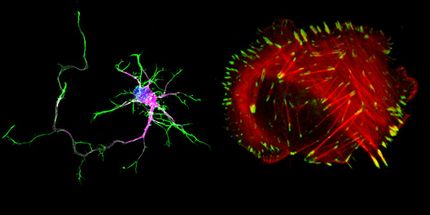Scripps Research Institute Team Shows Chemical Chaperones Help Increase Deficient Enzyme Activity in Gaucher Disease
Discoveries Point Toward Possible New Therapeutic Strategies
Advertisement
Scientists at The Scripps Research Institute have discovered that certain chemical chaperones help increase the activity of various types of glucocerebrosidase, the enzyme lacking in patients with Gaucher disease. This discovery suggests that the active levels of glucocerebrosidase can be improved through the use of select site-directed small molecules or chemical chaperones, which bind and stabilize proteins and prevent their degradation. These findings could lead to the development of first-in-class drugs for the treatment of the disease. The new study, published in the current issue of chemical biology, was led by Jeffery W. Kelly, Ph.D.
First identified in 1882, Gaucher disease is the most common lipid-storage disorder, the result of a genetic mutation passed from both parents. The lack of the specific enzyme, glucoerebrosidase, which helps cells break down the fat molecule glucocerebroside, produces a buildup of fatty deposits primarily in the spleen, liver, and bone marrow. The most common symptoms of Gaucher disease are liver and spleen enlargement, anemia, and bone pain. In a small number of patients with the disease, however, glucocerebroside also accumulates in the central nervous system, leading to neurological damage.
The primary treatment for Gaucher disease is enzyme replacement therapy, with the deficient enzyme replaced with injections of recombinant enzyme, although the treatment does not alleviate neurological symptoms because protein-based therapy cannot cross the blood brain barrier. A small-molecule-based treatment would have a distinct therapeutic advantage for patients with those symptoms.
In an earlier study, published in a 2002 issue of the journal Proceedings of the National Academy of Sciences, Kelly and his colleagues showed that the small molecule N-(n-nonyl) deoxynojirimycin increased the activity of N370S glucocerebrosidase in patient-derived cells, stabilizing the enzyme within the endoplasmic reticulum (ER), an extensive membrane network within cells that helps with protein synthesis and shape acquisition. This approach enabled proteins to exit the ER and proceed to the lysosome, a compartment within the cell membrane that helps the body break down macromolecules, where the accumulated lipid could be degraded.
This most current study was expanded to include more disease-associated glucocerebrosidase mutants plus additional classes of small molecules. The results show that several classes of these glucocerebrosidase mutants were also amenable to chemical chaperoning and that several, but not all, of the compounds tested were able to increase the activity of various glucocerebrosidase variants.






















































